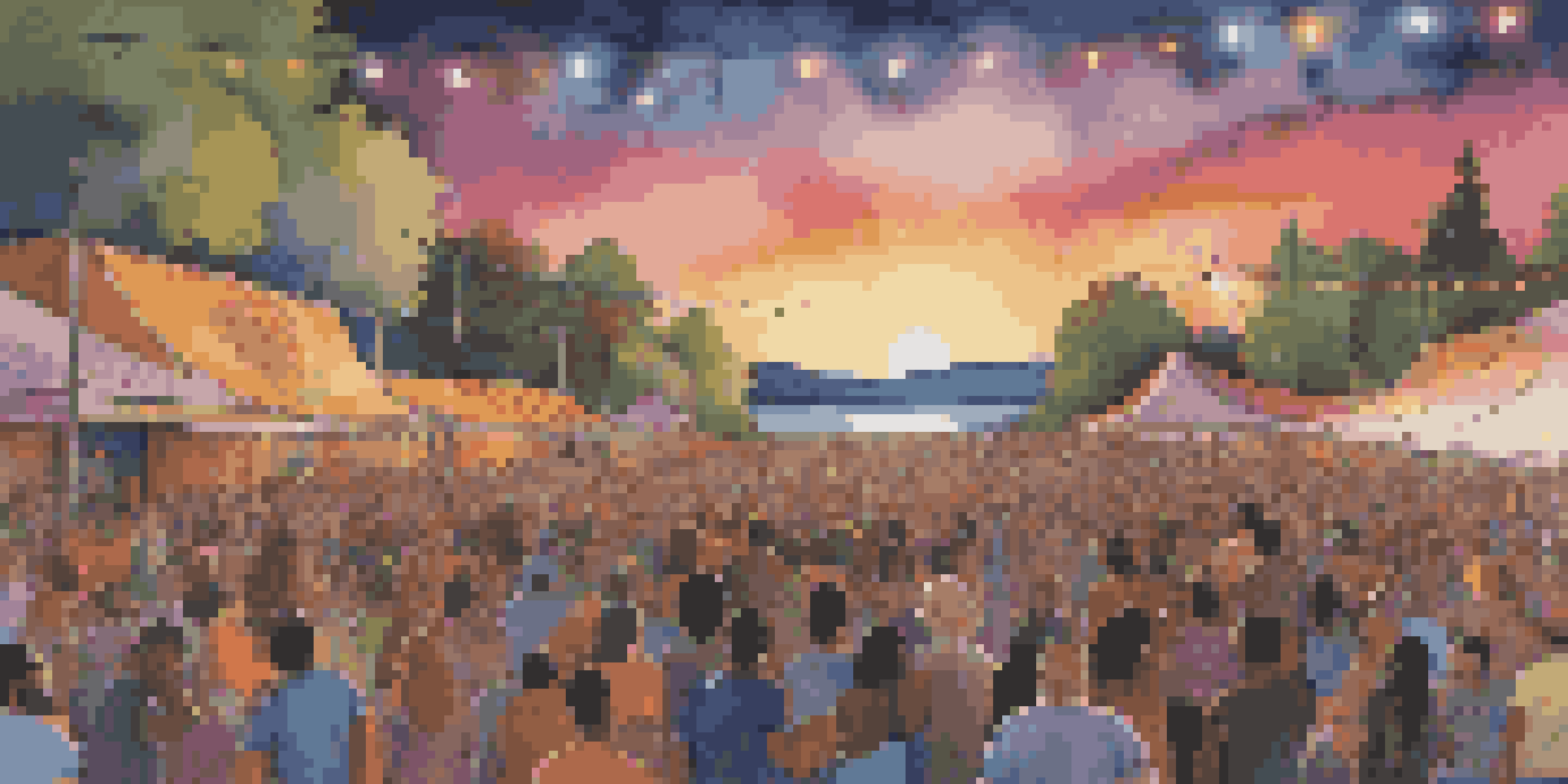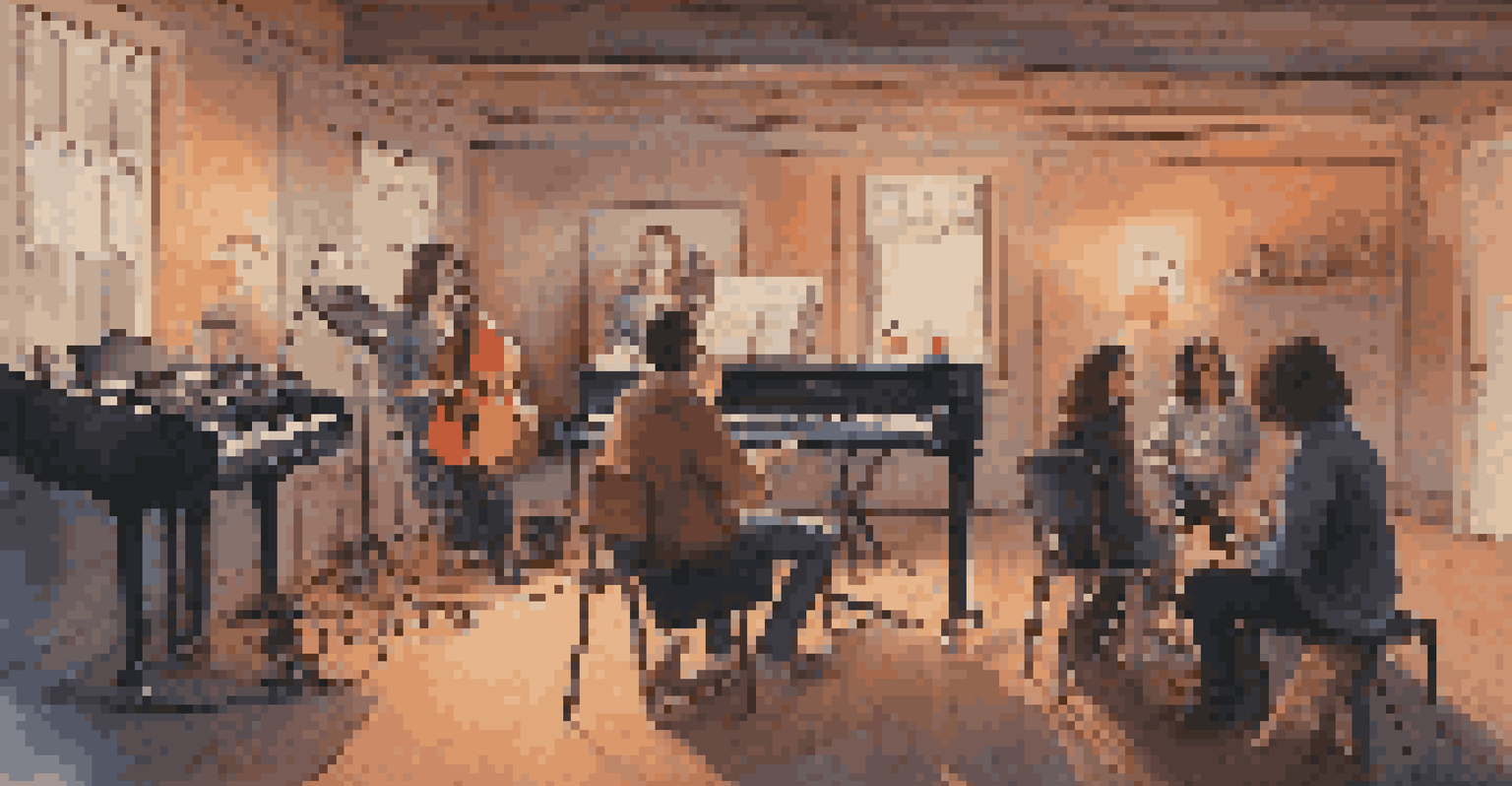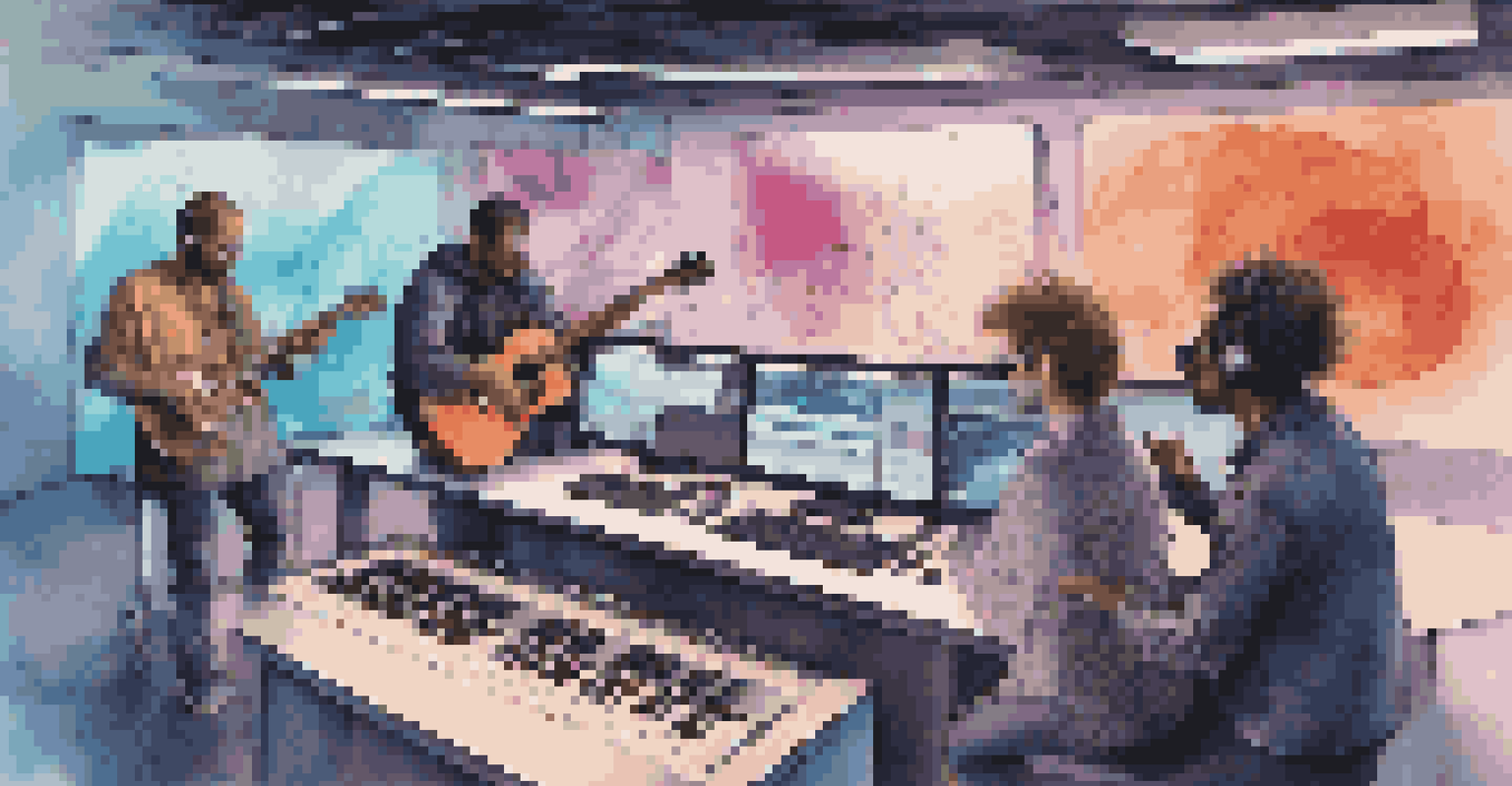Future of Collaborations Between Genres in Live Music

The Evolution of Genre Blending in Live Performances
Over the past few decades, the music industry has witnessed a remarkable evolution in live performances, particularly with how genres blend. Artists are increasingly stepping outside their traditional boundaries, merging elements of rock, hip-hop, jazz, and electronic music. This genre-blending creates a unique and dynamic experience for audiences, captivating fans from various backgrounds.
Music is the universal language of mankind.
For instance, consider the collaborations between pop stars and indie rock bands, which have resulted in chart-topping hits that resonate with a broader audience. These performances not only showcase the artists' versatility but also highlight the rich diversity within the music landscape. As artists experiment with different sounds, they pave the way for innovative live shows that keep fans coming back for more.
Looking ahead, this trend of genre blending is likely to continue, as musicians find new ways to connect with diverse fan bases. The stage will become a canvas for artistic expression, where the lines between genres become increasingly blurred, offering fresh and exciting experiences for concert-goers.
Technology's Role in Fostering Genre Collaborations
Technology is a significant driving force behind the future of genre collaborations in live music. With advancements in digital audio workstations and live sound engineering, artists can easily experiment with different genres during live performances. This accessibility allows for spontaneous collaborations, where musicians can integrate unexpected elements into their sets on the fly.

For example, the use of loop pedals and synths enables a solo artist to layer sounds and create a full band experience, inviting collaboration with other musicians. This technology not only enhances the live experience but also encourages artists to think outside the box, leading to innovative genre fusions that keep audiences engaged.
Genre Blending Enhances Live Shows
Artists are increasingly merging genres, creating unique and dynamic live performances that captivate diverse audiences.
As technology continues to evolve, we can expect more artists to embrace these tools, resulting in genre-bending performances that challenge traditional expectations. The future of live music will likely see artists collaborating in real-time, creating a unique and immersive experience that reflects the diverse influences shaping their artistry.
The Impact of Social Media on Genre Collaborations
Social media platforms are playing a pivotal role in the future of genre collaborations by connecting artists and fans like never before. Musicians can now showcase their work across various platforms, easily reaching audiences that span different genres. This exposure encourages collaborations, as artists recognize the potential for shared fan engagement and creative synergy.
The best music is essentially there to provide you something to face the world with.
For instance, viral trends on platforms like TikTok have led to unexpected collaborations between artists from differing genres, resulting in unique musical fusions. These collaborations not only generate buzz but also create a sense of community among fans who appreciate diverse sounds. Social media acts as a catalyst, enabling artists to collaborate and innovate in ways that weren’t possible before.
As social media continues to evolve, we can anticipate even more cross-genre collaborations emerging from these online interactions. The ability to connect with fellow musicians and fans globally will drive creativity and experimentation, making the live music scene more vibrant and diverse than ever.
Audience Expectations and the Demand for Diverse Genres
Today's music audiences are more eclectic than ever, often craving diverse experiences during live performances. With access to a myriad of genres at their fingertips, fans expect artists to explore new musical territories and collaborate with others. This shift in audience expectations is pushing musicians to adapt and innovate in their live shows.
For example, festivals that feature a mix of genres encourage artists to collaborate across boundaries, offering fans a taste of different sounds in one event. These experiences not only satisfy audience curiosity but also foster a sense of community among attendees who appreciate the diversity of music. Artists recognize that catering to these expectations can lead to a more engaged and enthusiastic fan base.
Technology Drives Collaboration
Advancements in technology enable artists to experiment with different sounds during live performances, fostering spontaneous collaborations.
As audiences continue to seek out unique and varied experiences, the push for genre collaborations in live music will undoubtedly grow. This trend will shape the way artists approach their performances, leading to more innovative and genre-defying shows that resonate with diverse audiences.
Collaborations as a Marketing Strategy for Artists
In today's competitive music landscape, collaborations between genres are not just artistic choices; they are strategic marketing moves. By teaming up with artists from different genres, musicians can tap into new fan bases and expand their reach. This cross-pollination allows for greater visibility and can often lead to chart successes.
For instance, a country artist collaborating with a hip-hop star can attract fans from both genres, leading to increased streaming numbers and ticket sales. This strategy not only enhances an artist's brand but also reinforces the idea that music is a universal language that transcends boundaries. Such partnerships can create buzz and excitement, generating interest and anticipation for both artists involved.
As the music industry continues to evolve, collaborations will likely become a standard practice for artists looking to maximize their impact. This approach will not only enrich the live music experience but also create a more interconnected musical landscape that celebrates diversity.
Challenges in Genre Collaborations and Overcoming Them
While genre collaborations offer exciting possibilities, they also come with challenges that musicians must navigate. Differences in artistic vision, audience expectations, and performance styles can create friction between collaborating artists. However, overcoming these hurdles can lead to rewarding creative outcomes.
For example, a rock band collaborating with a classical musician may initially struggle to find common ground. Yet, through open communication and a willingness to experiment, they can create a unique and memorable performance that highlights each artist's strengths. This process of collaboration encourages flexibility and adaptability, essential traits in the ever-evolving music industry.
Social Media Fuels Musical Synergy
Social media platforms connect artists and fans, encouraging cross-genre collaborations that lead to innovative musical fusions.
As artists continue to embrace genre collaborations, they will likely develop strategies to address these challenges. By fostering a spirit of cooperation and understanding, musicians can create innovative works that resonate with diverse audiences while celebrating the beauty of musical diversity.
The Future Landscape of Live Music Collaborations
As we look toward the future, it’s clear that genre collaborations will shape the landscape of live music in profound ways. With technology, social media, and shifting audience expectations at play, the possibilities for collaboration are endless. Artists are bound to explore new territories, creating experiences that transcend traditional genre definitions.
Imagine a future concert where artists from various genres come together to create an immersive experience that blurs the lines between music styles. This could involve a blend of live instrumentation, digital elements, and interactive audience participation, resulting in a dynamic and memorable show. Such experiences will attract diverse crowds, fostering a sense of community among music lovers.

In conclusion, the future of collaborations between genres in live music promises to be vibrant, innovative, and inclusive. As artists continue to push boundaries, audiences will benefit from an ever-evolving musical landscape that celebrates creativity and diversity in all its forms.